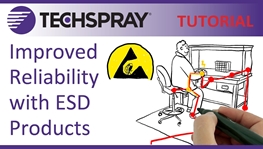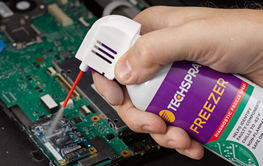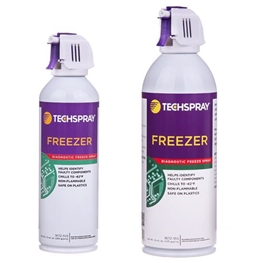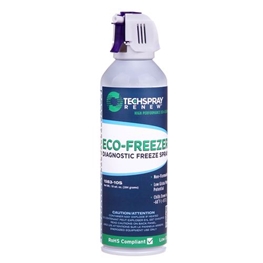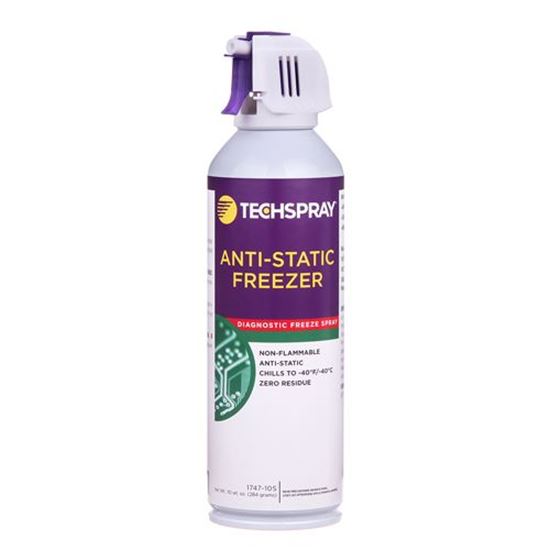
Anti-Static Freezer
HFC-134a diagnostic freeze spray for static sensitive assemblies
FAQ's
Does antistatic freeze spray (circuit chiller) leave a residue?
The alcohol additive that gives Antistatic Freeze Spray its antistatic properties evaporates completely, leaving no residue behind.
How can freeze spray (circuit chiller) avoid static build up?
Antistatic Freeze Spray is specifically formulated with dissipative properties to minimize static electricity build-up. These formulations contain additives that help conduct static charges away from the surface being cooled, reducing the risk of damaging sensitive components.
How do you use freeze spray?
For failure isolation, energize the suspect PC board. Spray on board to determine the area where the failure is occurring. Attach extension tube and spray on individual components until the failed component has been isolated.
Articles
Techspray Products Control ESD and Improve Reliability
Electrostatic discharge happens all the time, especially in dry climates and in the winter season, when there isn’t moisture in the air to help bleed the excess electrons (water is conductive, so allows the electrons to flow more easily). Normally it is nothing more than an irritation, but with sens...
Read This Post
Using Freeze Spray to Diagnose Faulty Electronics
Freezer is used to test electronic equipment for and locate thermal intermittent components and systems, provide heat sink protection for heat sensitive components during soldering and desoldering, perform low-temperature testing of prototype circuitry and electromechanical systems, and locate hairl...
Read This Post
You did not finish submitting your information to request a sample

